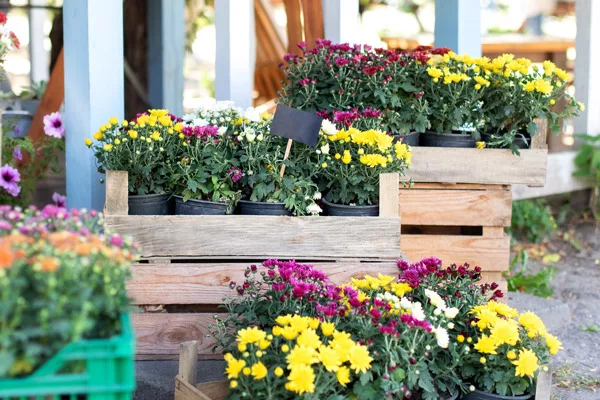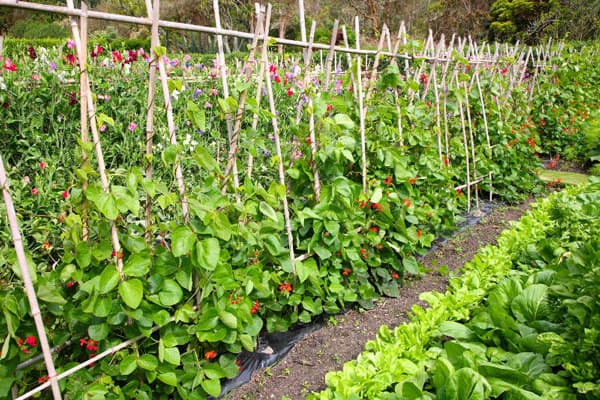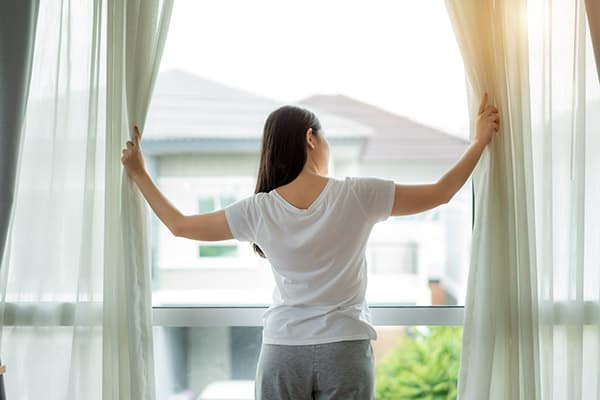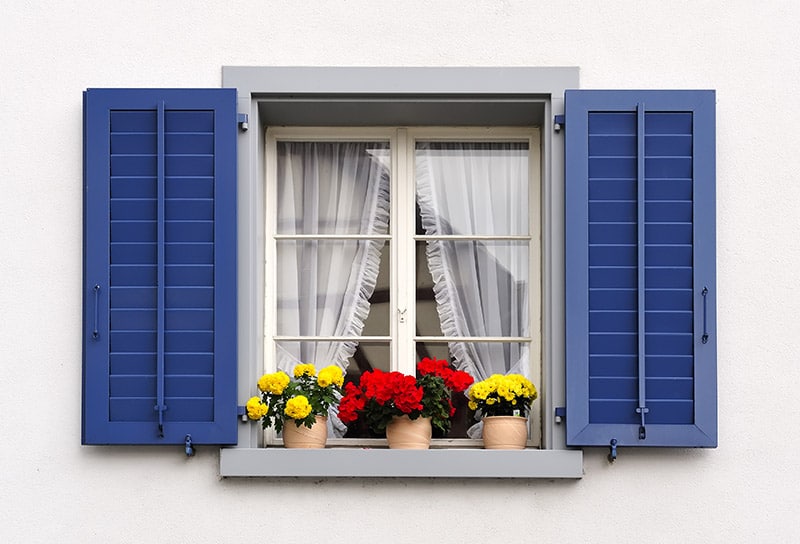How to Start a Small Patio Garden in 5 Easy Steps
1. Note Your Patio’s Growing Climate
You’ll need to do some homework before you grab your trowel and garden gloves. Instead, reach for a notepad and start studying your patio’s climate. Understanding your patio’s growing conditions is essential in establishing and maintaining a successful garden. Take a day where you can casually watch your patio for the following:

- Light: all plants need light to grow. Different vegetables and herbs will require different types of light like morning light, partial light, or afternoon sun. The kind of light your patio is exposed to during the day will determine what types of vegetables, herbs, and other plants you can successfully grow. A small patio can even have different sun exposure as the day goes on so it’s a good idea to spend a full day, from morning to evening, casually observing what type of light it gets.
- Direction: planning your small patio garden will mean you need to determine which direction your garden beds, planters, or pots will face. Similarly to understanding the light exposure your patio receives, the direction your plants face can help them grow. Southern and western exposure is typically considered to be the warmest and brightest. Meanwhile, eastern and northern exposure tend to be cooler with more shade.
- Closeness to Obstructions: consider your patio’s closeness to trees, building, or other objects that may block or hinder the sun exposure your potential garden will receive. If you’re building your patio garden in the early spring, check to see if nearby trees have leaves yet because a budding tree will give your garden more light now, but once it’s full with leaves, the sun exposure will dramatically change.
2. Establish Your Garden Goals
There’s just a little more planning left to do before you actually start planting (trust us, this bit of preparation will save you on time and money in the long run). This is where you’ll want to decide on:
- How to grow your plants: it may seem obvious, but this factor is nonetheless important. Whether you choose to grow your plants in containers and pots, a raised bed, or vertically on a trellis will mean finding the appropriate soil and type of plant that will do well in each scenario.
- What type of plants you want to grow: the biggest question you need to answer is what type of plants you wish to grow for your small patio garden. Do you want foliage? Or would you like to grow vegetables like tomatoes, eggplants, or lettuce? Would you want a small garden patio that features a lot of annuals? The type of plant you grow in your patio garden will require you to accommodate their varying sun exposure and soil needs.

3. Blueprint Your Garden
One final step and you’re there! You’ve studied what type of light your patio gets throughout the day, you’ve established what type of plants you want to grow and how to grow them, and now you’re ready to create a quick sketch that plots out where each plant and its housing will go. You’re probably itching to get started but remember, mapping out your patio garden—no matter how big or small—will prep you for maximum efficiency in getting it set up.
4. Time to Plant
Ready, set, get your plants! Head to your nearest garden center, favorite greenhouse, or a close by home improvement store like Lowes or Home Depot to buy your plants for your dream patio garden. You already know what you want to plant, what type of container to grow them in, the soil they need, and you’ve planned out any other accessories or tools you may need in your preparation stage. Now, it’s just a matter of loading up your plants and getting started.
Choose a day with good weather (preferably overcast with cooler temperatures—not too hot to toil in a patio garden) and line up your supplies and plants. Follow the directions on seed packets to successfully sow them and read up on growing guides and resources for your other mature plants (you can find an abundance of helpful guides online for free).
5. Grow with the Flow
Part of fully enjoying your patio garden is being flexible and adapting to changes. Although you’ve previously mapped out sun exposure, temperature, soils, and other factors that can affect plant growth, you’ll come to find out that sometimes plants have a mind of their own. You might need to move plants around, try different watering techniques, and work with different soil types to really hit it off with more stubborn plants. Adjusting with their different needs and continuing to be flexible with your garden goals and plans will help you enjoy your garden all summer long.
Here at Feldco, over 500,000 customers chose us for their home exterior renewal needs. We do everything better and we don’t accept average so we make sure that the installation goes smoothly. For any home improvement needs get a free quote today.





